We all want to do our part to take care of Mother Nature. A great way of doing this is recycling. When it comes to your almond milk containers, you might be wondering if it’s recyclable.
Most almond milk containers are made of plasticized paperboard, which is recyclable. Plastic containers are also recyclable, but check the number on the bottom to see if your program accepts it.
This article will teach you everything you need to know about if you can recycle your almond milk container and how to do it to help do your part in taking care of the planet.
Why You Can Recycle Most Almond Milk Containers
Most almond milk containers are made out of plasticized paperboard. This is a fancy way of saying paper that’s been coated with some form of plastic layer on the surface.
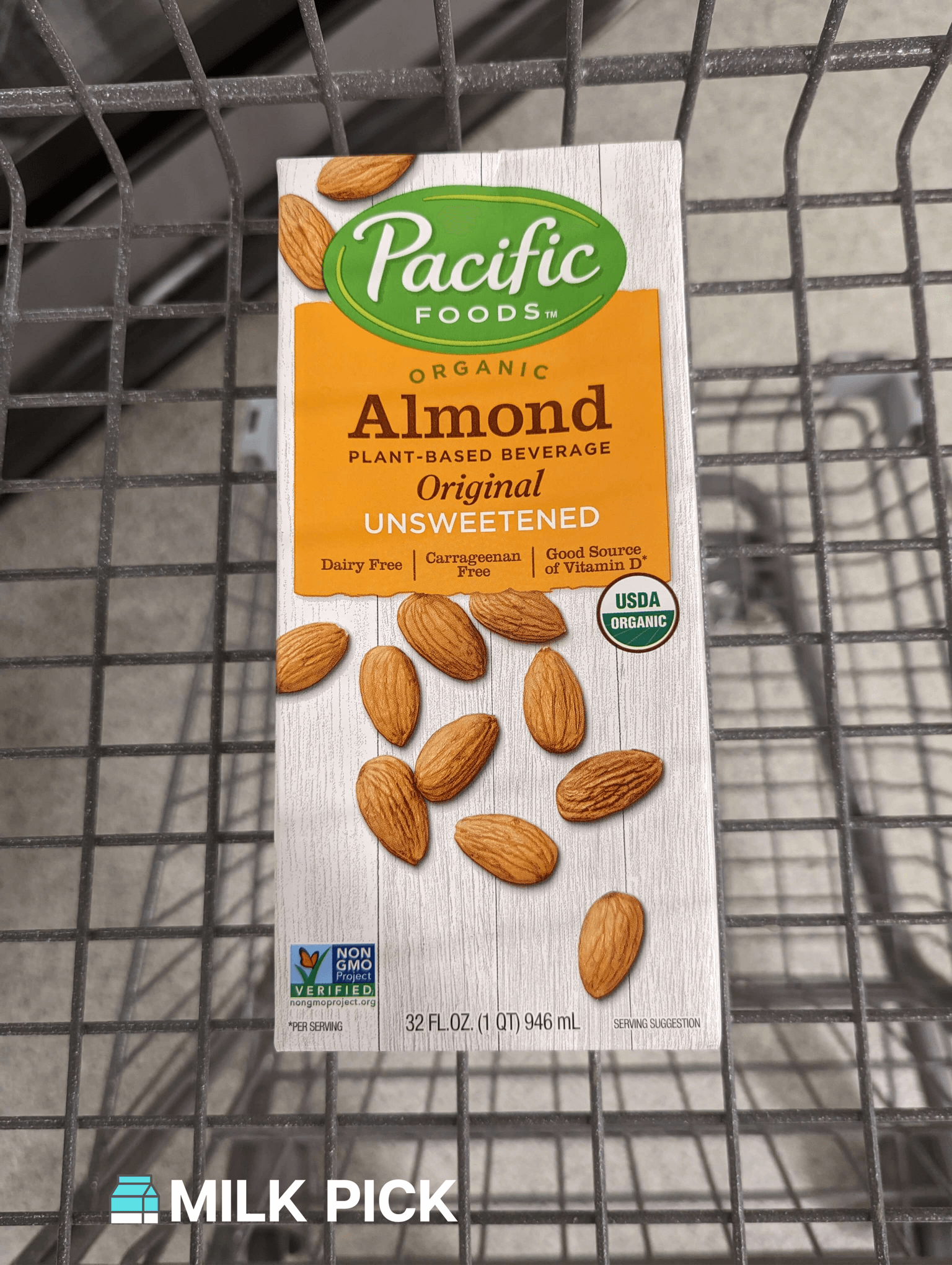
These plasticized paperboard containers are the ones you would typically identify in a box-like shape with a plastic circular lid cut into them.
Plasticized paperboard is considered recyclable and has been shown to be able to be re-used effectively to create other products.
Despite what you may read on the internet, plasticized paperboard does not typically contain wax coating. This means it is safe to recycle.
Another detail you have to consider if it’s a plasticized paperboard is whether your city requires you to put it in cardboard or plastic recycling.
Some cities don’t require the separation, while others are specific about considering plasticized paperboard a form of plastic.
What if Your Almond Milk Container is Plastic?
The other common option you encounter when it comes to almond milk containers is full-on plastic containers.
Some examples would be brands like Mooala or Califia.
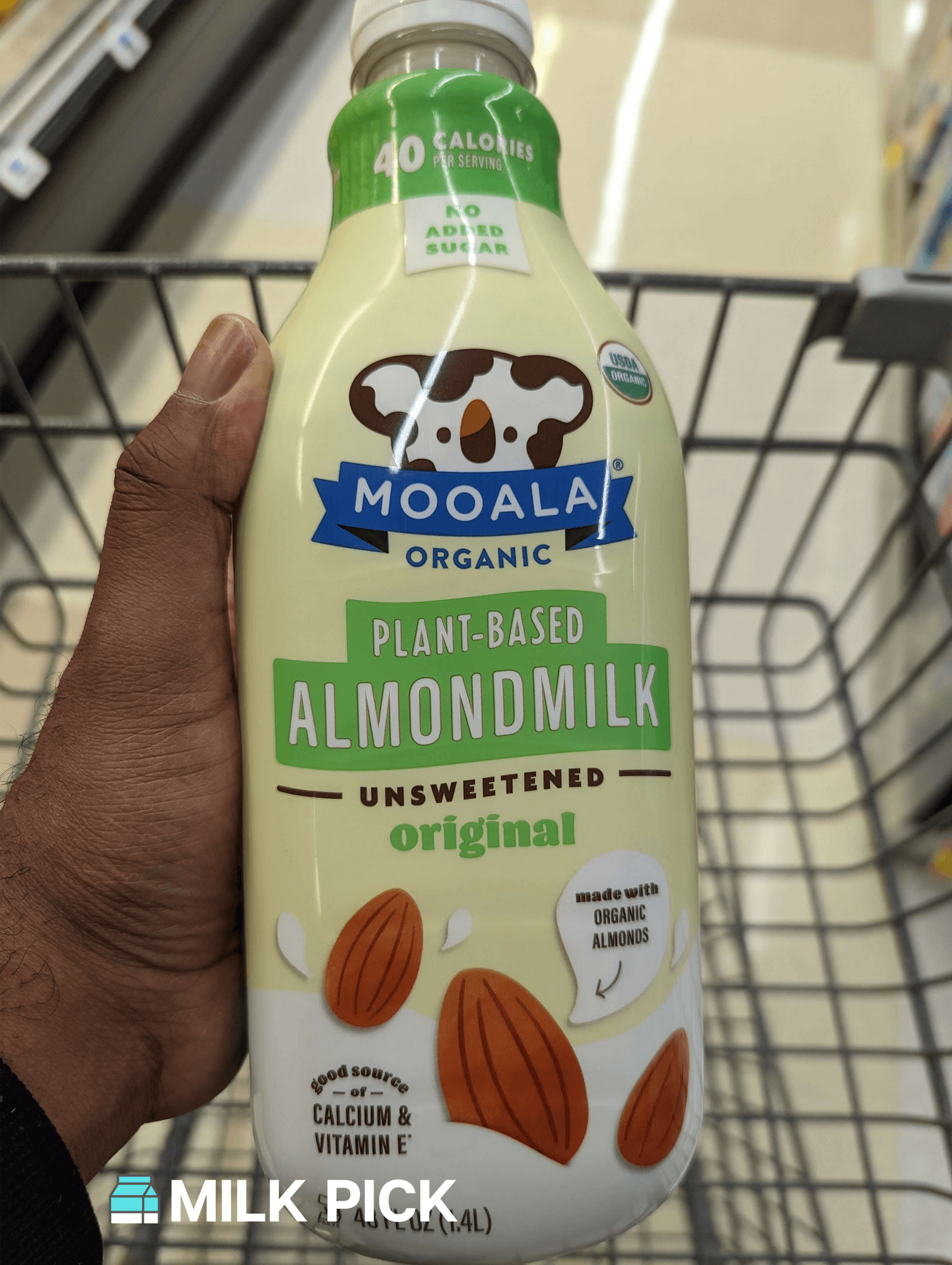
These containers also are generally able to be recycled. However, full-blown plastic almond milk containers require you to pay more attention before recycling them.
On the bottom of these containers, you will find a number that is usually in the center of a recycle symbol. These numbers designate the type of plastic that makes up the container.
Certain recycling programs will only accept specific numbers of plastic containers. Most programs will accept numbers 1 and 2 because they are easily recycled.
The other numbers tend to be slightly more difficult to recycle, which is why certain programs will not accept them.
If you do recycle these plastics, research has shown that you may be damaging the quality of the other recycled plastics.
If My Container Has a Wrapper, What Do I Do?
Some plastic almond milk containers will come wrapped with a plastic or film wrapping.
Most of these wrappers will generally be made of plastic type number 2 or 4. Now recall, plastic type number 2 is commonly accepted while type number 4 is not.
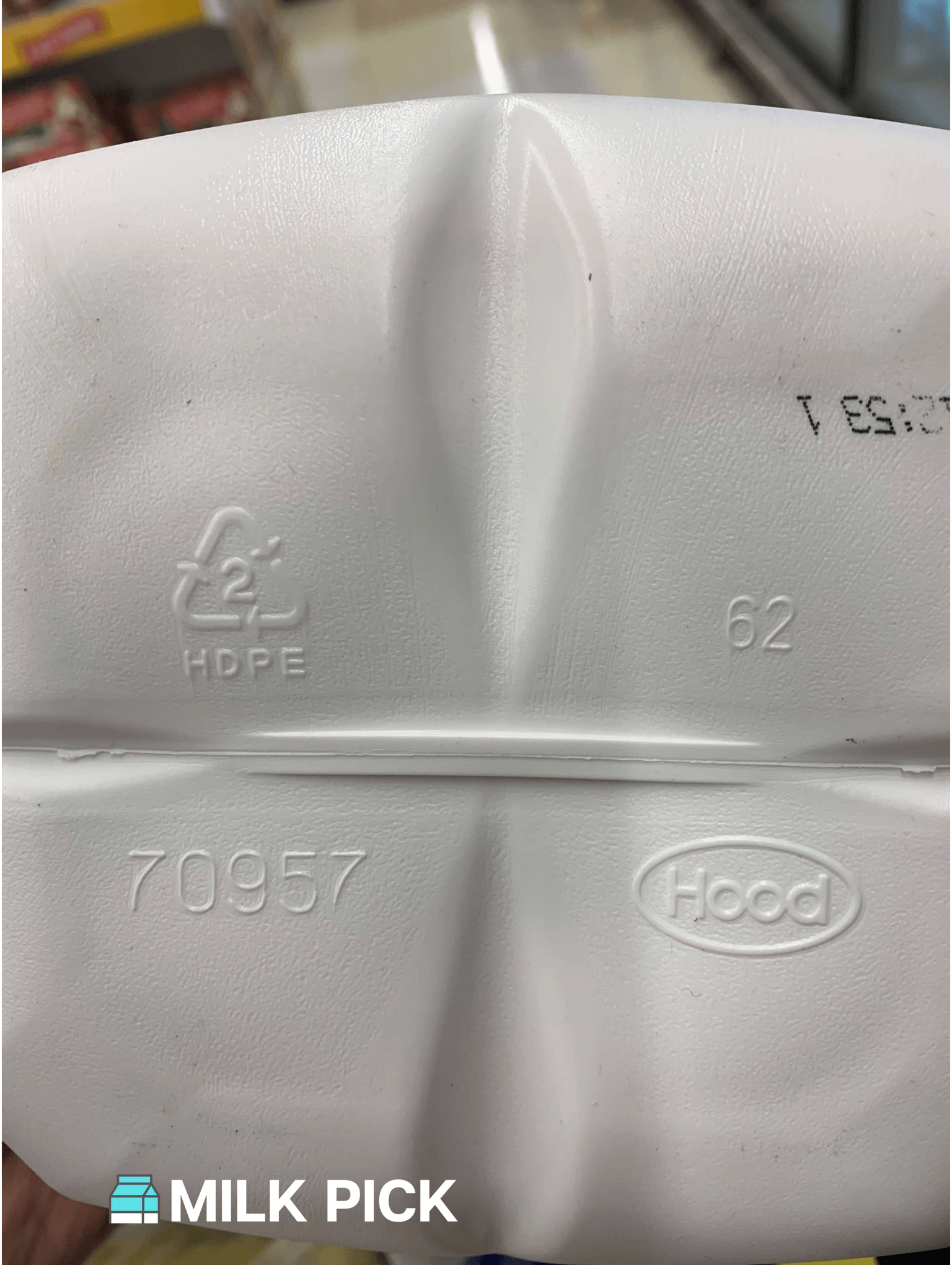
Unfortunately, most of the wrappers themselves will not designate whether they are type 2 or 4 plastic. So it’s hard to know for sure whether or not the wrapper is safe to recycle.
This is why it’s generally considered a good idea to remove the wrapper from the almond milk container before recycling.
This will help assure that the plastic container underneath is able to be effectively recycled.
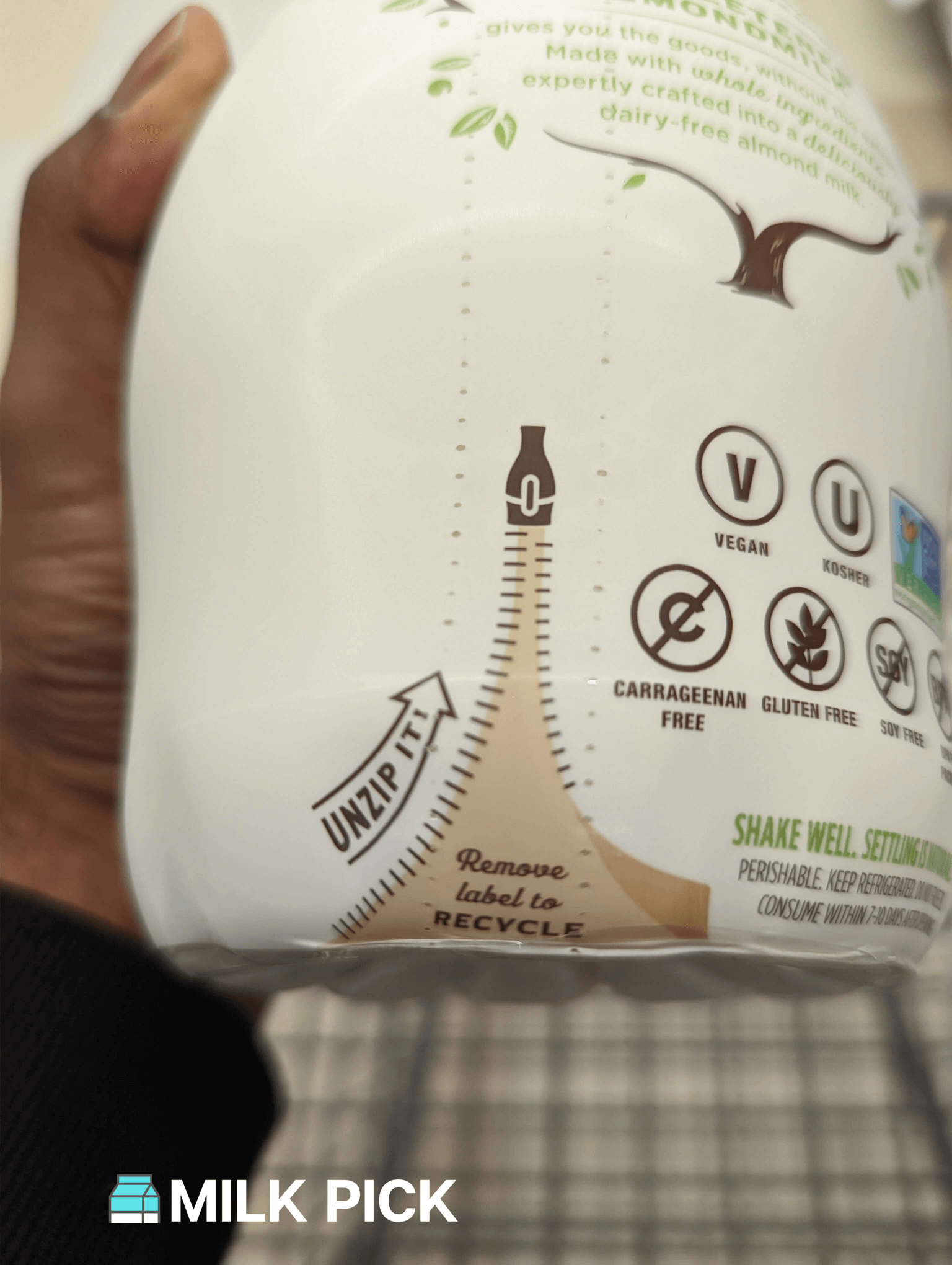
Where Can You Recycle Almond Milk Containers?
If your local trash program has a recycling program, you may be able to recycle your almond milk container by simply placing it in the appropriate bin outside your home.
However, if your city doesn’t give you your own recycling bin, you still have options. Many cities will still have a recycling program even if they don’t assign you your own bin.
You can go online and look up recycling drop-off sites for your local area. Earth911 has a database of local recycling centers near you.
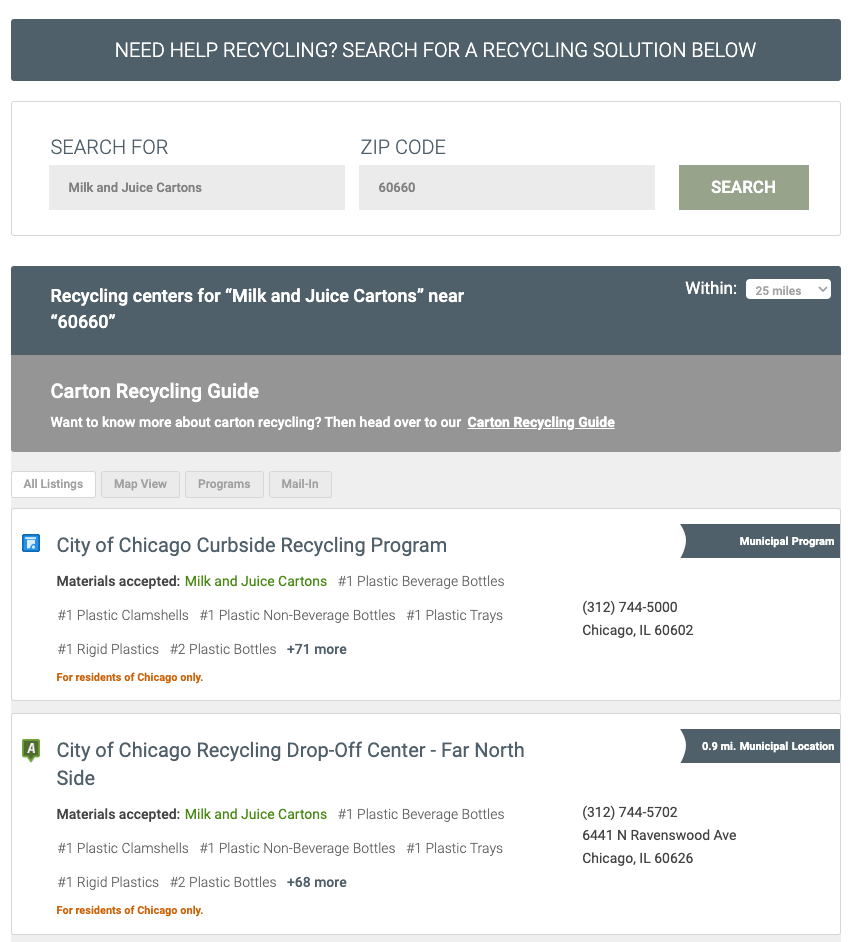
You can store your recyclables at home and drop them off at this location when your bin at home is full.
Keep in mind, many of these drop-off locations require you to sort your recyclables. They may have specific bins for glass, paper, and the different numbers of plastic.
While this may seem time-consuming, it really is a simple chore when it comes to taking care of this planet we call home.
Is Recycling Your Almond Milk Container Really Making a Difference?
When you realize that recycling your almond milk container takes a bit more work than you anticipated, it can be tempting to just not do it.
However, research shows that recycling plastics like those in your almond milk container significantly reduces net landfill waste.
Not only are we reducing landfill waste, but it helps us consume less, reducing our need to use environmental resources.
Beyond just helping Mother Earth, local governments have found that recycling produces a positive economic benefit for communities.
For instance, here's an example of the total impact of the recycling industry on the Texas economy (over $4.8 billion!)
Measure | Direct | Indirect | Induced | Total |
|---|---|---|---|---|
Employment | 10,688 | 6,651 | 5,571 | 22,910 |
Labor Income | $530,138,619 | $438,691,364 | $291,138,384 | $1,259,968,367 |
Value Added | $1,168,883,317 | $670,826,952 | $505,151,582 | $2,344,861,851 |
Output | $2,675,693,086 | $1,253,442,126 | $899,740,454 | $4,828,875,666 |
So while it may seem like a chore to recycle your almond milk container, recycling it is helping us create a better future for generations to come.
Can You Compost Your Almond Milk Container?
If the word compost is new to you, let’s cover what that means first before determining whether you can put your almond milk container in there.
Composting is a form of recycling natural items like food scraps and biodegradable materials. They mix together and break down over time to form a rich fertilizer for gardens.
Let’s recall that most almond milk containers are either plasticized paperboard cartons or plastic containers. While cardboard and paper can be composted, plastic cannot.
Consequently, your almond milk container should not be recycled in your compost pile.
The Most Sustainable Almond Milk Container
If you want to level up your environmental stewardship, you can take other steps beyond just recycling your almond milk container.
One option would be to start making your almond milk at home and storing it in a re-usable container (we prefer glass).
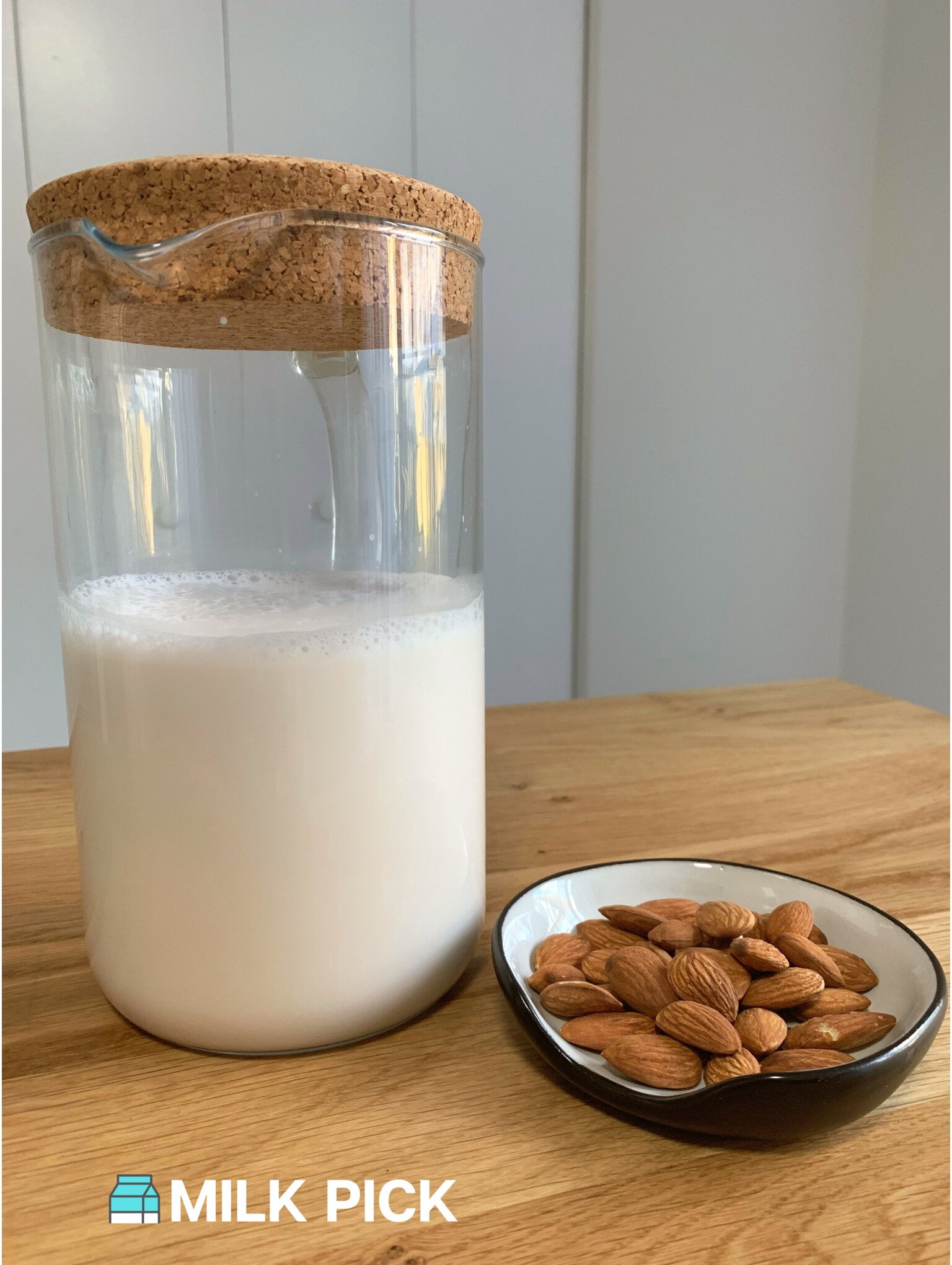
Almond milk is simple to make on your own with a few ingredients. And by re-using either a plastic or glass container, you’re contributing to less waste.
You also get more control over what goes in your almond milk, making this option better for both your health and the environment.
If you're interested, here's our simple recipe to make zero-waste almond milk.
How to Upcycle Your Almond Milk Container
If you’re looking for other ways to sustainably care for the planet, you could also consider upcycling your almond milk container. This simply means re-using it for a different purpose.
A popular recent upcycle with almond milk containers is to cut the portion of the carton around the plastic spout and then use it as a lid on a mason jar container. This gives you a seal with a pourable lid for whatever contents are in the mason jar.
Others will paint their plastic almond milk containers after removing the outside covering and use them as decorative vases. Handmade Charlotte has a great guide on how to upcycle your almond milk bottles into beautiful vases!
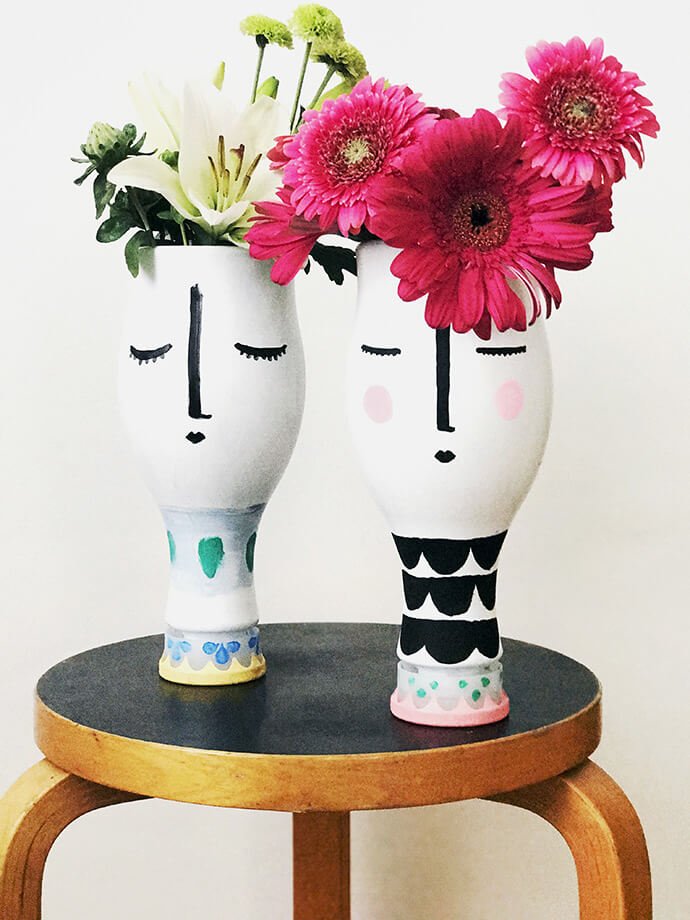
Another idea is to cut it in half and use it as a flowering pot or a small pot for your kitchen herbs.
The possibilities are endless—check Pinterest. So if you want another option for putting that almond milk container to good use, get creative and upcycle it!
Taking it One Step Beyond Recycling Your Almond Milk
While recycling or upcycling your almond milk container is a great step towards helping the environment, you can take it one step further.
You can research the environmental ethics of the almond milk company from which you buy your almond milk.
Because when you spend money on their almond milk, you are essentially using your dollar to send a message about what you value.
When doing this research, you can learn about efforts these companies may or may not be making to ensure that their company operates sustainably.
Looking up steps they take to reduce their carbon footprint or manage water consumption can be a good place to start.
Many almond milk companies are doing their best to try to be more sustainable, and those may be the ones worth supporting.
Recycle, Upcycle, or Re-Use Your Almond Milk Container!
Most almond milk cartons are made from either plasticized plastic or just plastic which are both recyclable materials. If you’re concerned about whether or not it will be accepted, you can check your local recycling program guidelines to be 100% sure.
If your almond milk comes in a plastic container, remove the outer wrapper and check the number on the bottom to make sure your recycling program will accept it.
You can’t throw your almond milk container in your compost pile because the plastic won’t break down. But you can upcycle your almond milk in creative ways if you don’t feel like recycling.
One of the most sustainable options for an almond milk container is to make your almond milk at home and use a re-usable container. You can also research almond milk companies to try to purchase brands that align with your personal environmental ethics.
While it may seem daunting to go through all the steps involved in recycling your almond milk container, I promise you the health of your planet is well worth the effort.
